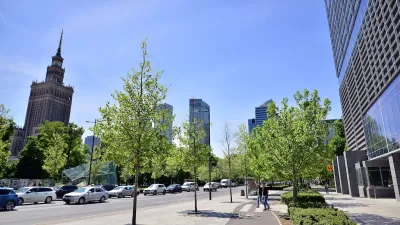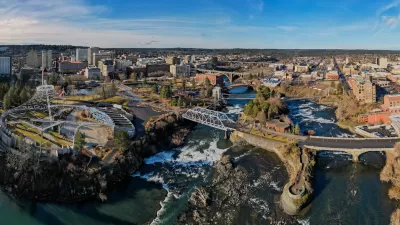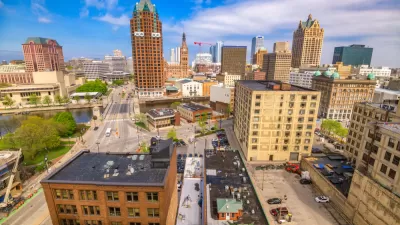The city is seeing fewer speeding violations after installing traffic calming measures and boosting enforcement to limit reckless driving.

Street safety projects in Milwaukee are having a positive impact, according to data released by the city, report David Clarey and Drake Bentley in the Milwaukee Journal Sentinel. “Of the 14 projects completed from 2020 to 2023, all of them show a reduction in speeding and fewer drivers traveling over the speed limit by 10 mph or more, according to the latest data released in August by the city's Department of Public Works.”
The number of car crashes in the city dropped by 1 percent in the last year, but fatal crashes remain more frequent than 15 years ago, with annual traffic deaths nearly doubling from an average of 39 between 2008 and 2012 to 72 per year between 2018 and 2022.
According to the article, “On the city’s north side, where residents have taken the brunt of the reckless driving blow, bump outs, traffic circles, and road diets, when a street's lanes are reduced or repurposed, were added to some main streets. For example, on North Avenue between 59th and 44th streets, speeding is down 15%, while between 30th and 24th streets, speeding is down 18%.” In other areas with traffic calming treatments, speeding was down by as much as 86 percent.
In addition to road design changes, the city and state have been cracking down on reckless driving. “Last year, a city committee approved a measure that allowed for the impounding of vehicles involved in reckless driving under certain conditions. The year prior, the city enacted a policy that allowed unregistered vehicles involved in reckless driving to be towed.”
FULL STORY: Data shows street projects led to less speeding in Milwaukee as officials crack down on reckless drivers

Alabama: Trump Terminates Settlements for Black Communities Harmed By Raw Sewage
Trump deemed the landmark civil rights agreement “illegal DEI and environmental justice policy.”

Planetizen Federal Action Tracker
A weekly monitor of how Trump’s orders and actions are impacting planners and planning in America.

Why Should We Subsidize Public Transportation?
Many public transit agencies face financial stress due to rising costs, declining fare revenue, and declining subsidies. Transit advocates must provide a strong business case for increasing public transit funding.

Understanding Road Diets
An explainer from Momentum highlights the advantages of reducing vehicle lanes in favor of more bike, transit, and pedestrian infrastructure.

New California Law Regulates Warehouse Pollution
A new law tightens building and emissions regulations for large distribution warehouses to mitigate air pollution and traffic in surrounding communities.

Phoenix Announces Opening Date for Light Rail Extension
The South Central extension will connect South Phoenix to downtown and other major hubs starting on June 7.
Urban Design for Planners 1: Software Tools
This six-course series explores essential urban design concepts using open source software and equips planners with the tools they need to participate fully in the urban design process.
Planning for Universal Design
Learn the tools for implementing Universal Design in planning regulations.
Caltrans
Smith Gee Studio
Institute for Housing and Urban Development Studies (IHS)
City of Grandview
Harvard GSD Executive Education
Toledo-Lucas County Plan Commissions
Salt Lake City
NYU Wagner Graduate School of Public Service





























